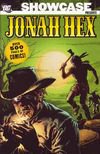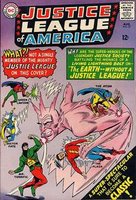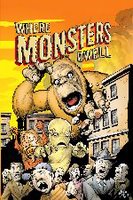Let’s start with the new. I don’t normally pick up new books, especially an ongoing series,
 because I just don’t think I have the time of patience to stay on top of things. Normally I’ll just wait to hear enough good things to pick up the TPB. When I saw Jonah’s ugly mug staring at me from the racks, I couldn’t resist. It’s great stuff – great art, superb script and it appears as though the creative team has a strong idea of the kind of ‘feel’ they want to give to the book. Kudos all around – and I am so stoked that westerns are getting another kick at the can.
because I just don’t think I have the time of patience to stay on top of things. Normally I’ll just wait to hear enough good things to pick up the TPB. When I saw Jonah’s ugly mug staring at me from the racks, I couldn’t resist. It’s great stuff – great art, superb script and it appears as though the creative team has a strong idea of the kind of ‘feel’ they want to give to the book. Kudos all around – and I am so stoked that westerns are getting another kick at the can.On to the Showcase Presents volume. This was my first purchase of the DC ‘Essentials’ clone and I could not be more impressed. I really like the fact that DC decided to mix some of its true superstars (Supers and GL) with some characters that have more of a cult following (Hex and Metamorpho). The overall product it quite nice – good creator credits and the quality of
 the reprint is very nice. At this stage, I have only been through the first 10 stories or so, but they represent some of the finest storytelling (in any genre) of the Bronze Age. This is a great read, and I really don’t feel that the black and white format detracts from it too much.
the reprint is very nice. At this stage, I have only been through the first 10 stories or so, but they represent some of the finest storytelling (in any genre) of the Bronze Age. This is a great read, and I really don’t feel that the black and white format detracts from it too much.The early Albano stories are very solid, as he only gives the readers hints as to what drives Hex. We learned much more from the frightened townspeople than from the man himself. This is how you set up continuing drama, each episode is both a self contained story and a building block. Another nicely played hand is the suggestion that nothing in the west lasts forever – as Jonah picks up a sidekick wolf for a very short amount of time. The finest tale in the collection so far is ‘Killers Die Alone’, in which the Albano/DeZuniga team is working in complete harmony. This is great, great stuff. It’s so good that I am actually forcing myself to only read one story per day, so that I can savour all of the snakebit, saddlesore greatness.
One odd, though not necessarily bad, choice was DC’s decisions to features some reprints of Outlaw for the final portion of this volume rather than continuing with more Hex. I own most of those pre-Hex All-Star Western issues, and I am glad the great art and solid writing will be finding a new audiences, especially the Jim Aparo western rarity. My guess, though, is that the average reader would feel happier with more Hex.
My fingers are crossed that we'll see a Diablo volume in the not too distant future, although Unknown Soldier would be at the very top of my wish list.







